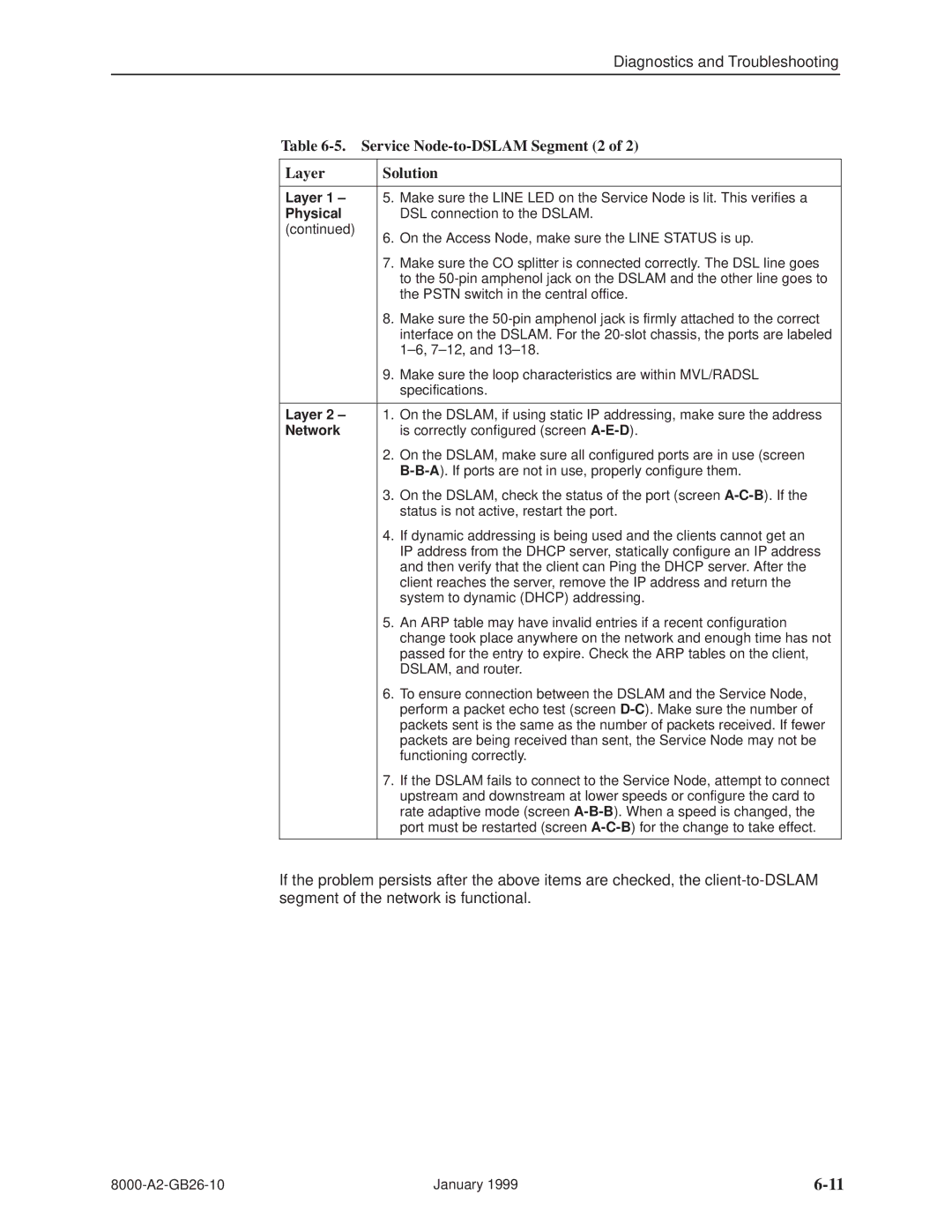Diagnostics and Troubleshooting
Table 6-5. Service Node-to-DSLAM Segment (2 of 2)
Layer | Solution | |
|
| |
Layer 1 ± | 5. Make sure the LINE LED on the Service Node is lit. This verifies a | |
Physical |
| DSL connection to the DSLAM. |
(continued) | 6. | On the Access Node, make sure the LINE STATUS is up. |
| ||
| 7. | Make sure the CO splitter is connected correctly. The DSL line goes |
|
| to the |
|
| the PSTN switch in the central office. |
| 8. | Make sure the |
|
| interface on the DSLAM. For the |
|
| 1±6, 7±12, and 13±18. |
| 9. | Make sure the loop characteristics are within MVL/RADSL |
|
| specifications. |
|
| |
Layer 2 ± | 1. On the DSLAM, if using static IP addressing, make sure the address | |
Network |
| is correctly configured (screen |
| 2. | On the DSLAM, make sure all configured ports are in use (screen |
|
| |
| 3. | On the DSLAM, check the status of the port (screen |
|
| status is not active, restart the port. |
| 4. | If dynamic addressing is being used and the clients cannot get an |
|
| IP address from the DHCP server, statically configure an IP address |
|
| and then verify that the client can Ping the DHCP server. After the |
|
| client reaches the server, remove the IP address and return the |
|
| system to dynamic (DHCP) addressing. |
| 5. | An ARP table may have invalid entries if a recent configuration |
|
| change took place anywhere on the network and enough time has not |
|
| passed for the entry to expire. Check the ARP tables on the client, |
|
| DSLAM, and router. |
| 6. | To ensure connection between the DSLAM and the Service Node, |
|
| perform a packet echo test (screen |
|
| packets sent is the same as the number of packets received. If fewer |
|
| packets are being received than sent, the Service Node may not be |
|
| functioning correctly. |
| 7. | If the DSLAM fails to connect to the Service Node, attempt to connect |
|
| upstream and downstream at lower speeds or configure the card to |
|
| rate adaptive mode (screen |
|
| port must be restarted (screen |
|
|
|
If the problem persists after the above items are checked, the
January 1999 |
